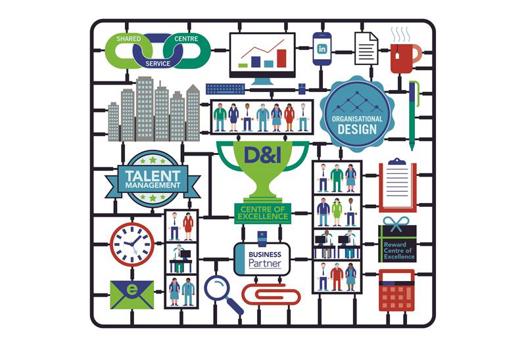It was widely agreed by the HR experts in attendance that these functions had become disconnected, with some suggesting the Ulrich model may be responsible as it has disrupted the link between the basic processes and the more strategic elements of corporate development.
Add to the mix the fast changing commercial landscape and it's no surprise that HR finds itself under increasing pressure. The HR profession on one hand needs to keep operations as lean and cost effective as possible, whilst on the other creating and maintaining an environment that will enable growth and development for an often unpredictable business need.
According to one of the Symposium speakers, Gyan Nagpal, former head of talent in APAC for Deutsche Bank and now CEO of consultancy, PeopleLENS, one element of this pressure is the increasing demand from corporate boards for a greater involvement and depth of insight from the HR profession. HR needs to present its case in a more structured and well-researched way to be able to create the more nimble and responsive HR strategies needed in today's economic climate.
Developing these tailored strategies will require a rigorous analysis of both the macro and micro factors that have an impact on an organisation and its target markets. This detailed analysis would cover the more common elements such as demographics, as well as the variances in less tangible areas such as engagement and motivation across countries.
It has to be said at this point that whilst this method provides a solution, it is not, nor is there likely to be, a truly global solution. With constantly changing cultural and contextual influencers, underlying issues will not be addressed through the creation of a 'one-size-fits-all' approach. Instead Nagpal's methodology provides HR with a road map for the investment of scarce corporate resources - something likely to gain much more board attention.
How then can you develop a robust talent management strategy when, as is increasingly the case, the direction and future needs of organisations is unclear?
Forecasting, attracting and retaining the people an organisation will need for an uncertain future is a huge challenge for HR. However, according to another speaker on the day, the solution could simply be employing a significant number of people who thrive on ambiguity, complexity and uncertainty.
David Stephenson, head of learning and development at Telefónica O2 UK and Ireland, believes this approach prepares organisations for an unknown future. But recruiting and retaining these individuals is where the difficulty lies due to a combination of the natural inclination to recruit in one's own image and the tendency of these individuals to move on if their attitude is not valued.
What is needed then is a more relaxed attitude towards retention which involves taking a few risks on people who don't necessarily fit with the organisation in its current form. Yes, this may lead to a higher attrition rate, but you have to consider that the real value of these 'mavericks' is not necessarily in their long term ambitions, but more in their role as short-term catalysts for change and development.
This approach may not be what HR professionals want to hear, but this change is necessary. After all, the ability to change to reflect and adapt to shifting markets is likely to prove crucial in coming years.
It is clear that the HR function is changing and Simon Wright, CEO and president at Virgin Entertainment Group hinted at what this new function looks like. Wright cited examples at Virgin where individuals were 'parachuted' into new areas where they had little or no experience - and thrived.
Taking this approach which no longer 'pigeon-holes' people based on skills and experience can provide a platform for Stephenson's 'mavericks' to excel and provide businesses with the skills needed to stay ahead in this changing environment.
Over the coming years, HR and line managers alike will need to take more risks in recruitment and talent management to stay ahead in business, but to do so effectively the two functions need to combine their efforts and support each other as strategic partners should.
Sue Brooks (pictured) is MD at Ochre House








